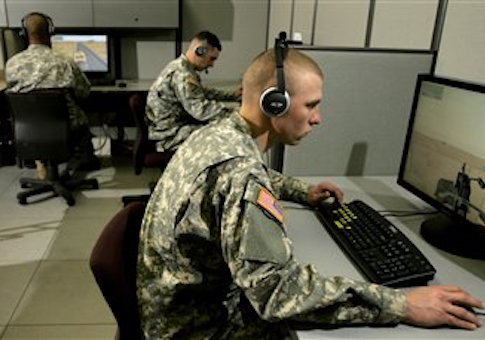As Army leaders work behind the scenes to beef up the force’s electronic warfare capability, which lags about 25 years behind most other modern countries, Congress is readying a new piece of legislation to help military leaders procure the funds necessary to catch up with the rest of the globe, according to a preview of a new bill viewed by the Washington Free Beacon.
Countries such a Russia, China, and Iran have made significant gains in the electronic warfare arena in recent years, according to congressional and military officials who spoke to the Free Beacon.
Meanwhile, the United States has fallen far behind on this front due to shrinking budgets and an acquisitions process for new technologies that can take more than a decade to complete.
The new bill seeks to cut through this red tape by giving Pentagon leaders more flexibility on how funds are spent within the electronic warfare umbrella. It is just the first step of many that will be required to bring the United States into the modern age, officials say.
"It is critical our military dominate the offensive and defensive ends of electronic warfare because our enemies know they can harm our troops by targeting our electronic systems," Sen. Mark Kirk (R., Ill.), a leading sponsor of the bill who recently met with military leaders to discuss the threat, told the Free Beacon.
"My Electronic Warfare Enhancement Act will cut through the Pentagon’s bureaucracy in order to put critical electronic warfare technology into the hands of our servicemen and servicewomen as rapidly as possible," Kirk said.
Col. Jeffrey Church, chief of the Army’s electronic warfare division, told the Free Beacon that he and others have been working behind the scenes to convince Defense Department leaders of the necessity to catch up to other nations’ technological capabilities.
"The [technology] is out there right now," Church said. "We can go to industry. We can go to the government, off the shelf. The technology is there. Often times, people forget, but I say, ‘What do you think the Russians are using? Make-believe technology? No, it’s there. We could have, the U.S. army, a world class’" electronic warfare force.
For more than a decade, the Army was out of the electronic warfare business, Church said. Other nations surpassed the United States during that time in technology and its use in the field.
Senior military leaders, for instance, have described Russia’s capabilities on this front as "eye-watering."
From around 1995 to 2003, the Army had shuttered its electronic warfare units. Operations informally ramped up again around 2005, when a large number of troops were being killed and maimed by radio activated improvised explosive devices in Iraq.
While the army shut its units down, other military branches, such as the Air Force, continued to operate in the electronic warfare arena.
At the time, "We didn’t have any people. We didn’t have any equipment. We didn’t have any experience," Church said. "All of that stuff had gone out of the inventory in the mid 1990s. So really the Army started building from zero."
Multiple Pentagon studies have concluded over the years that "the army is 25 years behind," Church said. "The army needs to dedicate efforts to this resource. The army needs to rapidly get back in to the electronic warfare capabilities. Every study concludes the same thing."
Since Army operations on the electronic warfare front ramped back up, leaders have developed a plan to procure new systems and technology that would enable troops to conduct both defensive and offensive electronic operations.
However, most of that technology will not be in place until 2023 or beyond, according to timelines viewed by the Free Beacon. The chief obstacle is securing the necessary funds in a time when military resources are being whittled down.
"Everything comes down to dollars," Church said. "It doesn’t matter how good your program is, how important your program is, if your program doesn’t get dollars it doesn’t go anywhere."
Kirk’s bill offers a remedy for this problem.
It would provide Pentagon leaders with flexibility in how funds are spent, and it would permit them to use any appropriated funds for electronic warfare to be used for the development and implementation of equipment.
This means that troops in the field will more quickly receive the technology they need to conduct electronic warfare missions.
Congress wants the Pentagon to speed up its acquisitions process so that capabilities can be fielded in around two years, which amounts to a much shorter timeline than the current standard.
Kirk’s bill would give the electronic warfare portfolio what is known as Rapid Acquisition Authority. This designation would allow officials to waive certain rules that slow down the process.
